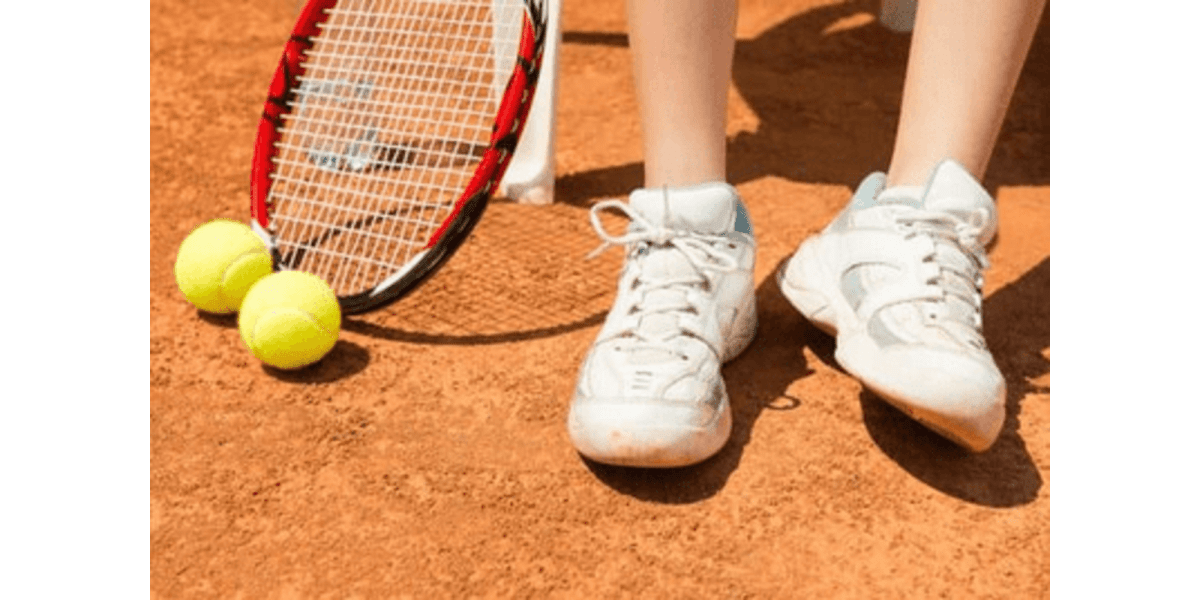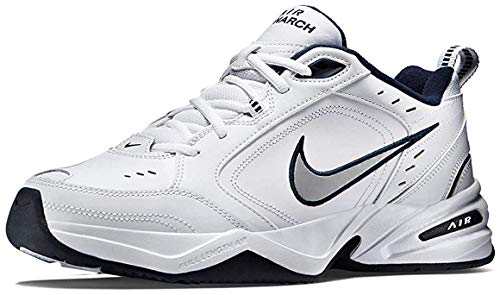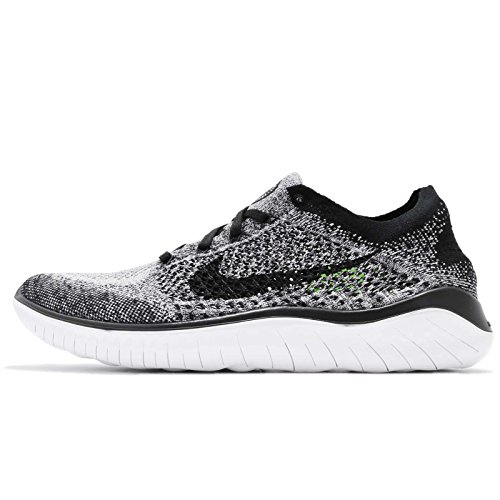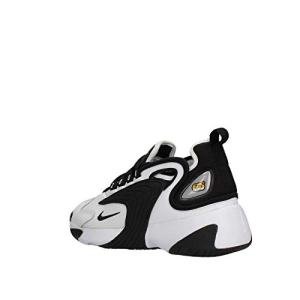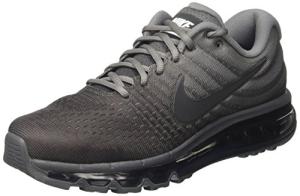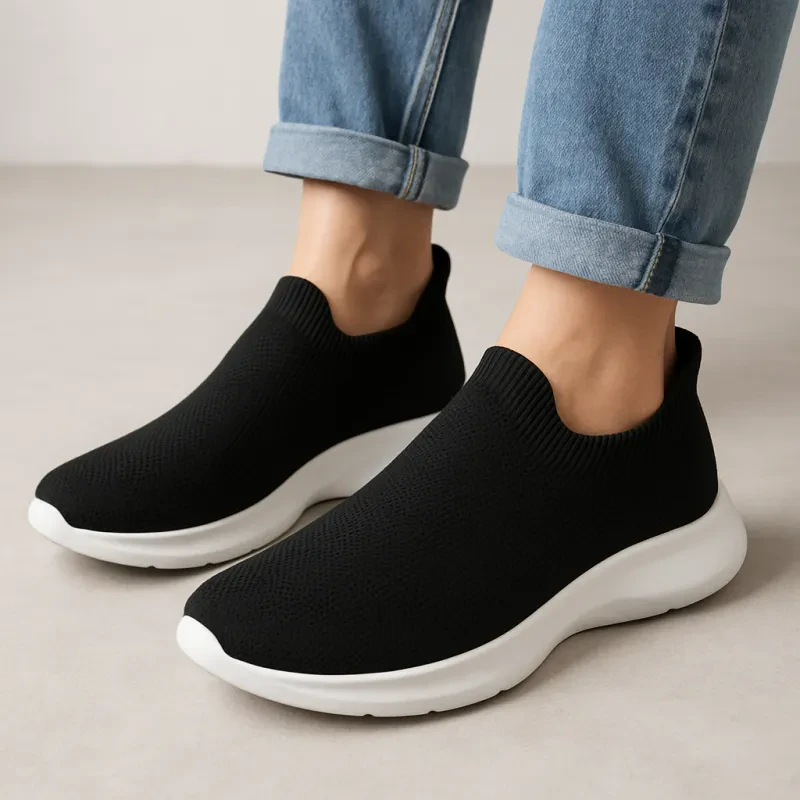Choosing the Ideal Tennis Shoes: A Step-by-Step Guide for Optimal Performance
Choosing the right tennis shoes is essential for any player looking to improve their game. A well-fitted pair of tennis shoes enhances performance, supports the foot during quick movements, and reduces the risk of injury. Selecting tennis shoes involves understanding foot types, evaluating shoe options, and considering comfort and durability.

Players should prioritize finding shoes that offer the right support and stability for their playing style. The difference between tennis shoes and regular athletic shoes lies in their design, which caters specifically to the lateral movements of the game. By being aware of these key factors, players can make informed choices that will benefit their performance on the court.
Shopping for tennis shoes can feel overwhelming, but knowing what to look for can simplify the process. Players should assess features such as traction, cushioning, and overall fit to find the perfect match for their needs. With the right information, anyone can navigate the search for tennis shoes confidently.
Key Takeaways
- Proper fit and support are crucial for tennis shoe performance.
- Shoes should provide comfort and stability during lateral movements.
- Key features like outsole traction can impact a player’s game.
Anatomy of Tennis Shoes
Tennis shoes are designed with specific features to enhance performance on the court. Understanding their anatomy helps players make informed choices.
Outsole
The outsole is the bottom part of the shoe. It comes in different patterns for traction. A proper outsole provides grip, allowing players to make quick movements and changes in direction.
Midsole
The midsole is found between the outsole and the upper part of the shoe. This section absorbs shock and provides cushioning. A good midsole enhances comfort and reduces the risk of injury during play.
Toe Box
The toe box is the front part of the shoe where the toes sit. It should have enough space for the toes to move comfortably. A well-fitted toe box helps prevent blisters and other discomforts during matches.
Upper
The upper encapsulates the foot and offers support. It can be made from various materials, including mesh for breathability and synthetic materials for durability. A secure upper helps stabilize the foot while playing.
Each of these components plays a crucial role in the overall performance of tennis shoes. By focusing on these features, a player can find shoes that fit well and support their game.
Understanding Foot Types and Shoe Fit
Choosing the right tennis shoe starts with understanding foot types and ensuring a proper fit. Each person's foot can have unique characteristics, which play a significant role in selecting the correct shoe.
Identify Your Foot Type
Foot types generally fall into three main categories: flat, neutral, and high-arched.
- Flat Feet: These shoes provide more stability and arch support.
- Neutral Feet: These individuals benefit from well-cushioned shoes that offer both support and flexibility.
- High-Arched Feet: A shoe with extra cushioning is essential to absorb impact.
To find a foot type, a simple test can be performed. Wet the foot and step onto a paper towel. The footprint will show the arch shape, helping to identify the type. Understanding this can guide one toward suitable shoe features.
The Importance of Proper Shoe Fit
A proper shoe fit is crucial for comfort and performance. A tennis shoe should fit snugly without pinching. There should be enough space to wiggle toes, but no slipping at the heel.
Consider the following tips for an ideal fit:
- Foot Size: Measure both feet, as it is common for them to be slightly different sizes.
- Width: Shoes should accommodate the foot's width. Too tight can cause discomfort.
- Arch Support: Shoes must provide adequate support for the foot type to avoid injuries.
Investing time in determining the right fit prevents issues like blisters, calluses, or chronic pain, ensuring better performance on the court.
Elements of Comfort and Cushioning

Comfort and cushioning are essential for optimal performance in tennis. Proper shoe design helps players move quickly while minimizing the risk of injury. This section will cover the importance of midsole and heel design, as well as tips for choosing the right insole.
Midsole and Heel Design
The midsole plays a crucial role in a tennis shoe's cushioning system. This part of the shoe absorbs impact during quick movements and provides stability. A well-constructed midsole offers adequate shock absorption, reducing stress on the feet and joints.
Heel cushioning is equally important. Shoes with enhanced heel design help to stabilize the ankle and prevent rolling. Players should look for shoes that feature soft, responsive materials like EVA (Ethylene Vinyl Acetate) in the midsole. This material molds to the foot's shape, offering personalized support.
Additionally, a snug fit in the heel area prevents the foot from slipping, which enhances overall stability. Selecting models with extra cushioning around the heel can also alleviate pressure during intense lateral movements.
Choosing the Right Insole
The insole provides the first layer of comfort within the shoe. Customizable options can improve support and fit based on unique foot shapes. Players with high arches may benefit from an insole that maintains the foot's arch structure.
When assessing insoles, look for materials that offer breathability and moisture management. This helps keep the feet dry during long matches. Insoles with added shock-absorbing properties can further minimize impact, protecting against injuries like plantar fasciitis.
Players should also consider thickness. A thicker insole may provide more cushioning, but it can also raise the foot inside the shoe. This could affect balance and performance. Testing a variety of insoles can help identify the best fit for comfort and functionality.
Evaluating Durability and Performance

When selecting tennis shoes, durability and performance are crucial elements. The right materials and construction methods can significantly impact how long the shoes last and how well they perform on the court.
Material and Construction
The material used in tennis shoes plays a vital role in both durability and performance. Common materials include synthetic leather, mesh, and rubber.
- Synthetic Leather: This offers resistance to wear and keeps the shoe lightweight.
- Mesh: Provides breathability, keeping the feet cool during play.
- Rubber Outsoles: Important for grip and traction, rubber can vary in thickness and hardness based on the court surface.
Additionally, the shoe's construction influences its durability. Shoes with reinforced areas, such as the toe and heel, often last longer as they withstand more wear from quick lateral movements. Pay attention to stitching quality as well; stronger stitches contribute to a longer lifespan.
Longevity Factors
Several factors affect the longevity of tennis shoes. Playing style has a major influence, as players with aggressive movements may wear shoes out faster.
- Court Surface: Different surfaces—clay, grass, or hard courts—demand different shoe features. Hard courts can wear down shoes quickly, so opting for reinforced models is beneficial.
- Frequency of Use: Regular players should consider rotating between two pairs to extend the life of each.
Overall, maintaining proper care, such as cleaning and storing shoes correctly, also plays a significant role in maximizing durability. By taking these factors into account, players can select tennis shoes that will enhance their performance while lasting longer on the court.
The Role of Stability and Motion Control

Stability and motion control are key features in tennis shoes. They help players maintain balance and support their feet during lateral movements.
Stability shoes offer support by keeping the foot in its natural position. This is important during quick side-to-side movements common in tennis. A shoe with good stability can prevent ankle rolls and support the arch.
Motion control shoes provide extra support for those who overpronate. This condition occurs when the foot rolls inward too much. Shoes with motion control help minimize this issue by guiding the foot into a better position.
Here are some features to look for:
- Lateral support: Essential for quick pivots and sudden stops.
- Firm midsoles: Help absorb shock and provide stability.
- Lockdown fit: A snug fit keeps the foot securely in place.
Choosing the right shoe depends on the player's unique foot shape and playing style.
Some brands focus specifically on stability and motion control. For instance, models like the Asics GEL-Kayano Lite 2 provide excellent comfort and support. This type of choice is vital for performance and injury prevention.
Selecting Shoes by Play Style

Choosing tennis shoes that match a player's style can significantly boost performance on the court. Different styles demand specific features in tennis footwear to enhance comfort, stability, and agility.
Best Picks for Baseliners
Baseliners often engage in long rallies and rely on consistent footwork. They need shoes that offer excellent traction and cushioning to handle the lateral movements and sudden stops. Look for shoes with a low profile design for better stability and an abrasion-resistant outsole for durability on hard courts.
Key Features:
- Cushioning: Look for ample cushioning to absorb shocks during play.
- Lightweight: Lightweight materials allow for quick movements.
- Support: Shoes should provide good ankle support to prevent injuries.
Some recommended options include the Nike Zoom Vapor and Adidas Barricade, known for their comfort and grip.
Top Choices for Serve and Volley Players
Serve and volley players rely on quick, explosive movements and need shoes that facilitate fast acceleration. They should prioritize lightweight, responsive shoes that offer good support for quick transitions to the net.
Key Features:
- Grip: Outsoles should provide excellent grip on various court surfaces.
- Stability: A stable shoe design helps with sudden lateral movements.
- Quick Response: Look for shoes that allow for swift changes in direction.
The Asics Gel-Resolution and Wilson Rush Pro are popular choices due to their responsive cushioning and support tailored for aggressive play.
Brands and Manufacturers

Choosing the right brand of tennis shoes can greatly influence performance and comfort. Understanding popular brands and what makes a quality manufacturer helps players make informed choices.
Exploring Popular Brands
Several brands stand out in the tennis shoe market. Nike is known for its innovative designs and technology that enhance player performance. They offer a variety of styles suited for different playing surfaces and foot types.
Adidas combines style with functionality. Their Boost technology provides excellent cushioning, making them a favorite for comfort-conscious players. They also focus on sustainability, appealing to eco-friendly consumers.
Asics is highly regarded for its gel cushioning system, offering great support and stability. This brand is particularly known for shoes that cater to different foot shapes, ensuring a tailored fit for many athletes.
What Makes a Quality Manufacturer
A quality manufacturer focuses on several key elements. First, innovation is essential. They should invest in research and development to create advanced technologies, such as moisture-wicking materials or adaptive fit designs.
Durability is another important factor. Tennis shoes must withstand rigorous movements on the court. A manufacturer that uses high-quality materials ensures longevity and better performance.
Lastly, customer feedback is crucial. Manufacturers that listen to player experiences and make adjustments tend to produce better products. This ongoing commitment to improvement helps tennis players find shoes that truly enhance their game.
Assessing Outsole and Traction
When choosing tennis shoes, outsole design is vital. The outsole is the part that makes contact with the court. Different surfaces require different types of outsole patterns for optimal performance.
Types of Outsoles:
- Hard Court Outsole: Often made of rubber with a smooth pattern. This design provides durability and grip on hard courts.
- Clay Court Outsole: Features a herringbone pattern for better movement on clay surfaces. This helps prevent slipping.
- Grass Court Outsole: Usually has a unique design with raised knobs. This helps maintain traction on slippery grass.
Importance of Traction: Good traction helps players maintain balance and control. This is especially important during sudden movements. Shoes should have a grippy outsole to prevent slips and falls.
Testing Traction: When trying on shoes, perform a quick test. Stand on one foot and press the other foot down. A shoe with great traction will feel stable.
Considering Playing Style: Players with a more aggressive style may need shoes with added traction. Those who prefer a lighter shoe might focus more on speed.
Practical Tips for Shoe Shopping
When shopping for tennis shoes, timing and preparation can make a significant difference. These practical tips will guide you through the process, ensuring the best fit and performance for your needs.
When to Shop
The best time to buy tennis shoes is later in the day. Feet tend to swell throughout the day, so shopping in the afternoon or evening will help ensure a more accurate fit.
Consider visiting the store after physical activity to simulate how your feet expand during play. This will help in choosing a shoe that won't feel too tight during matches.
It’s also wise to try shoes on both feet. Shoe sizes can vary between brands, so a fitting should be thorough. Walk around the store to check for comfort, ensuring there is about a thumb's width of space at the front of the shoe to allow for movement.
Wear the Right Socks
Wearing proper socks while shoe shopping is crucial for determining the right fit. Tennis-specific socks are thicker and provide cushioning. They also simulate the condition in which the shoes will be used.
Choosing the correct thickness prevents misjudging the fit. If you typically wear thicker socks during play, you should replicate that during the fitting.
Additionally, consider moisture-wicking socks to assess comfort and manage sweat, which can affect shoe fit.
Be mindful of how the shoes feel when moving in these socks. Comfort and support are essential to enhance performance and minimize the risk of injuries.
Protecting Your Feet
Taking care of the feet is crucial for any tennis player. Proper protection can help prevent common foot issues like blisters, calluses, and complications from conditions like bunions. Below are essential strategies to keep feet healthy on the court.
Preventing Blisters and Calluses
Blisters and calluses are common issues for tennis players. These can develop from friction against the shoe or the court surface. To prevent these problems, choosing the right socks is important.
- Use moisture-wicking socks: These draw sweat away from the skin, reducing friction.
- Select shoes that fit well: They should have enough space, especially in the toe area, to avoid rubbing.
- Break in new shoes gradually: This helps the feet adjust without excessive friction.
Regularly checking for signs of blisters or calluses can also help. If you feel discomfort, it is a signal to reassess your footwear choices.
Shoes for Special Conditions
Some players may have foot conditions such as bunions that require specific attention. Special shoes can help provide support and alleviate discomfort.
- Look for wide toe boxes: These provide more room for the toes, reducing pressure on bunions.
- Choose cushioned soles: Extra padding helps absorb shock, which can be helpful for players prone to injuries.
Also, consider custom orthotics. They can offer additional support tailored to individual foot shapes and conditions. This is especially important for preventing complications that can arise from improper footwear.
Understanding the Difference Between Running and Tennis Shoes
Choosing the right footwear is key for any athlete. Tennis shoes and running shoes are designed differently to meet specific needs.
Tennis Shoes:
- Lateral Stability: Tennis shoes provide support for side-to-side movements. This is important for quick changes in direction during a match.
- Weight: They tend to be heavier due to extra material for traction and stability.
- Midsole: Offers a flat solid heel for better control on the court.
Running Shoes:
- Shock Absorption: These shoes are built for long-distance running. They have cushioned midsoles, often filled with air or gel.
- Weight: Generally lighter than tennis shoes, helping runners maintain speed.
- Durability: They wear out around 300 miles, as the cushioning flattens.
Key Differences
| Feature | Tennis Shoes | Running Shoes |
|---|---|---|
| Main Focus | Lateral support | Shock absorption |
| Weight | Heavier | Lighter |
| Midsole Type | Flat solid heel | Air or gel-filled heel |
Frequently Asked Questions
Choosing the right tennis shoes involves understanding various factors such as court surfaces, shoe types, and fit. This section addresses common questions to help players make informed decisions about their footwear.
What factors should one consider when choosing tennis shoes for hard courts?
When selecting tennis shoes for hard courts, consider durability, cushioning, and support. Shoes need to withstand the wear of rough surfaces and provide shock absorption. A stable fit is also essential to help prevent injuries during play.
Which type of sole is appropriate for a tennis shoe used on a hard court?
Tennis shoes for hard courts typically feature a hard rubber outsole. This type of sole offers durability and traction on the court. A herringbone pattern is often preferred for optimal grip and stability during lateral movements.
How does one determine the correct fit and size for tennis shoes?
To find the correct fit, measure the foot length and width. Standing on a piece of paper, trace the foot's outline and then measure the length. It's best to try on shoes later in the day when feet are slightly swollen to ensure comfort during gameplay.
Can the brand of a tennis shoe affect performance and comfort on the court?
Yes, the brand can impact both performance and comfort. Different brands use various technologies and materials in their shoes. Players may find that some brands align better with their foot shape and playing style than others.
What are the distinguishing features of the best tennis shoes for performance?
The best tennis shoes often include features like good cushioning, ankle support, and lightweight design. Breathability is also important to keep feet cool. Additionally, shoes that offer enhanced stability help players maintain balance during quick movements.
How does court surface influence the choice of tennis shoes?
Court surfaces significantly influence shoe choice. Hard courts require shoes with more durability and support. In contrast, clay courts may demand shoes that provide better traction and are designed to slide easily, allowing for quick pivots without losing stability.
